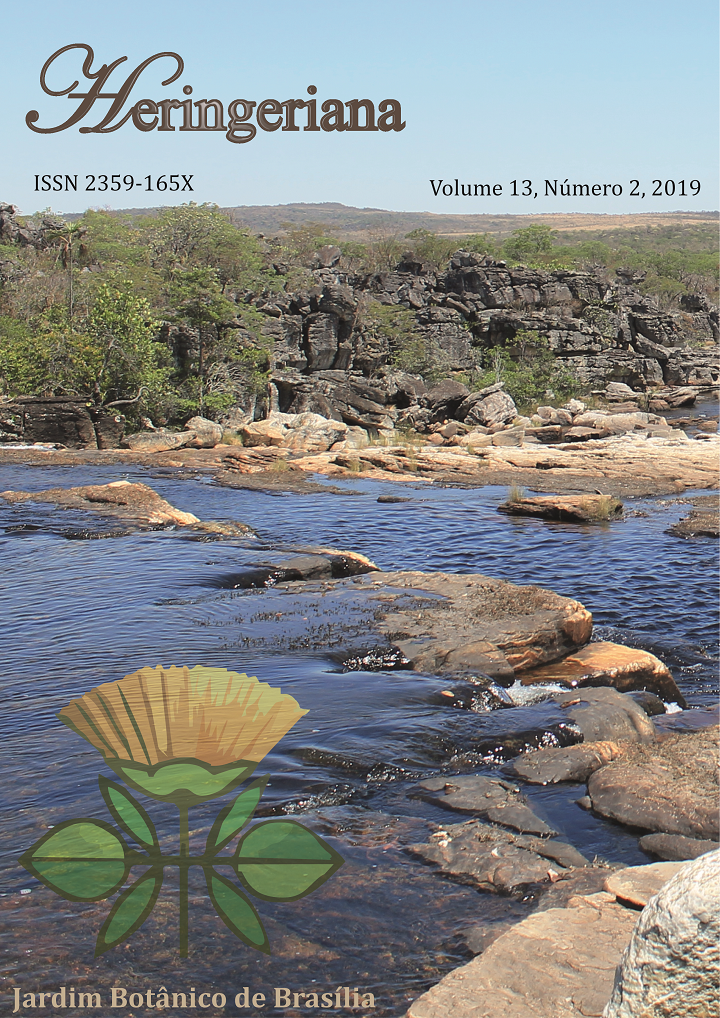Germinative response of Vellozia cinerascens (Velloziaceae) to different temperature and luminosity conditions
DOI:
https://doi.org/10.17648/heringeriana.v13i2.917891Keywords:
Espí?©cie nativa, fotoperí?odo, sementes florestaisAbstract
In view of the constant degradation of ecosystems in the semi-arid region and the naturally restricted distribution of some species, studies aimed at the conservation of the germplasm bank are essential for maintaining biodiversity. The objective of this study was to evaluate the germination of Vellozia cinerascens seeds, at different temperature levels, in the presence and absence of luminosity. Two experiments were carried out: (1) at different temperatures (20, 30, 40 and 50í°C); (2) at alternating temperatures (30-15 and 40-20í°C), both with two types of luminosity and four repetitions of 25 seeds per treatment. Twelve-hour photoperiod was used to represent day and night in both experiments. The germination count was performed during 30 days. The parameters evaluated were percentage, speed index and mean germination time. At temperatures of 20 and 50í°C the percentage of germination was lower, both for light and dark conditions. The temperatures 30 and 40í°C in the presence of light and alternating 30-15í°C were the ones that obtained the highest percentage of germination, speed and shortest germination time. Temperatures 30 and 40í°C in the presence of light and alternating 30-15í°C were those with the highest germination percentages, speed and shortest germination time.Downloads
Published
2019-12-30
How to Cite
Silva, L. S. da, Costa, T. R., de Moura, C. C., Santos, L. M. dos, & Machado, E. L. M. (2019). Germinative response of Vellozia cinerascens (Velloziaceae) to different temperature and luminosity conditions. Heringeriana, 13(2), 40–51. https://doi.org/10.17648/heringeriana.v13i2.917891
Issue
Section
Original Articles
License
By submitting, the authors declare that they have not submitted the work to another journal and agree to have their article published under a Creative Commons Attribution 4.0 International BY License (CC BY 4.0), which means that authors retain ownership of the copyright but anyone can use the published content provided the original authors and source are cited. The scientific, orthographic and grammatical content is the full responsibility of the authors.








